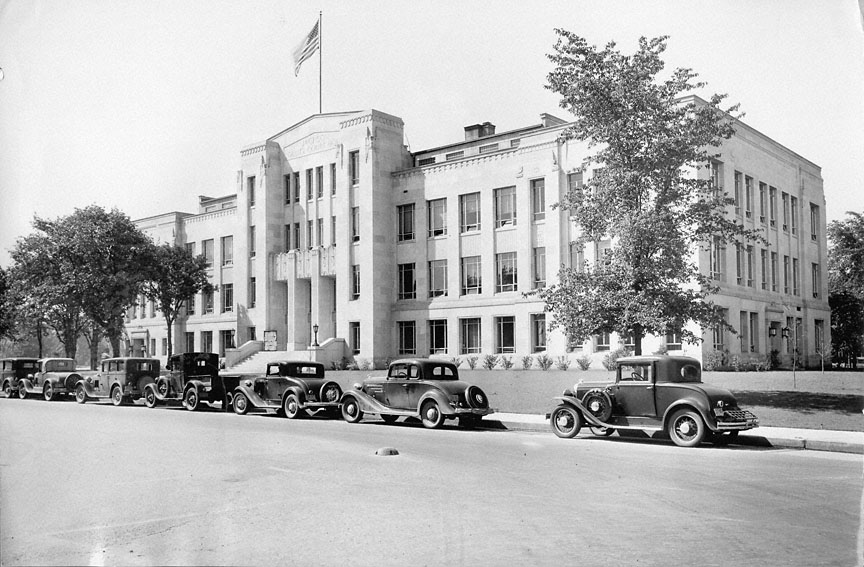- Catalog No. —
- CN 005909
- Date —
- June 1939
- Era —
- None
- Themes —
- Arts
- Credits —
- Oregon Historical Society
- Regions —
- Southwest
- Author —
- Unknown
Jackson County Courthouse, Medford
This photograph, taken in June 1939, shows the Jackson County Courthouse in downtown Medford. Designed by Montana architect John G. Link, this art deco-style building was dedicated in September 1932, six years after Jackson County residents voted to move the county seat from Jacksonville to Medford.
The Jackson County Courthouse was originally meant to be the centerpiece of a monumental civic center in downtown Medford, one that would properly highlight the city’s role as the major metropolis of southern Oregon and northern California. Planned civic centers were central features of the City Beautiful movement, an architectural and urban planning movement that had its origins in the 1893 World’s Columbian Exposition in Chicago. This movement exercised an important influence on American architectural styles and urban planning efforts during the first half of the twentieth century.
In 1930, Medford city officials hired Chicago-based planner Jacob L. Crane, Jr., to draw up a proposal for a monumental civic center. Crane’s plan called for a classically inspired ensemble of government buildings, churches, hotels, and other monumental structures surrounding a central park. Dominating the scene was the county courthouse, depicted in Crane’s plan as a massive structure that lords over the rest of the civic center. Architectural historian Robert Russell notes that the courthouse was topped “by a dome that is characteristic of a statehouse more than of a western county court building.”
Construction of the county courthouse began soon after Crane’s plan was finished in the spring of 1930. However, as the Depression deepened, Crane’s monumental—and extremely expensive—plan fell by the wayside. Not until the 1960s and 1970s would Medford’s civic center be fully developed, and by then the City Beautiful planning doctrine had lost favor among architects and urban planners. They were looking to modernism for inspiration, evidenced by the stark, utilitarian designs of the public buildings that were built during this period.
Further Reading:
Russell, Robert D., Jr. “Unrealized Visions: Medford and the City Beautiful Movement.” Oregon Historical Quarterly 102, 2001: 196-209.
Wilson, William. The City Beautiful Movement. Baltimore, Md., 1989.
Written by Cain Allen, © Oregon Historical Society, 2003.
